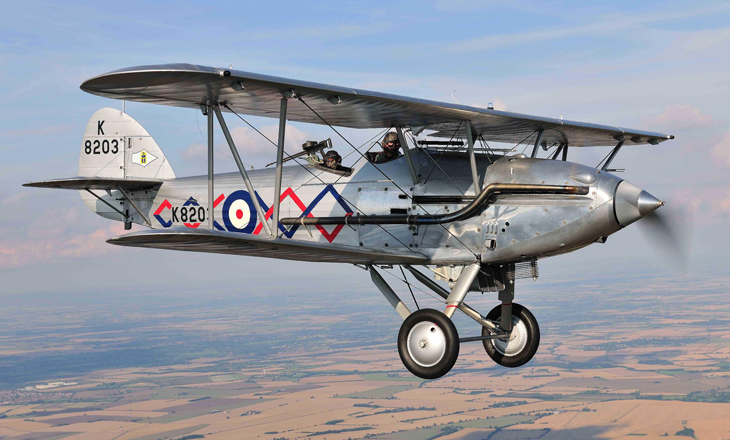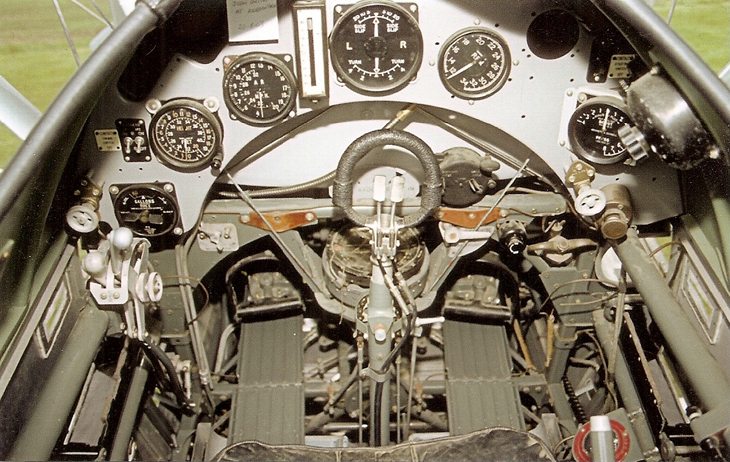 On entering service in 1930, Sydney Camm’s Hawker Hart bomber proved so much quicker than the RAF’s existing fighters that the potential for a fighter version of the newcomer was self-evident and developed without delay. Following initial evaluation of two prototypes at RAF Martlesham Heath, a batch of six Hart Fighters was duly completed in 1931 and placed for development with No.23 Squadron at RAF Kenley.
On entering service in 1930, Sydney Camm’s Hawker Hart bomber proved so much quicker than the RAF’s existing fighters that the potential for a fighter version of the newcomer was self-evident and developed without delay. Following initial evaluation of two prototypes at RAF Martlesham Heath, a batch of six Hart Fighters was duly completed in 1931 and placed for development with No.23 Squadron at RAF Kenley.
 The adaptation was considered successful and in 1932 a contract was raised for the manufacture of an initial run of 17 such aircraft, the first of which took to the skies in February 1933. By now the bi-plane had been renamed the Hawker Demon, some 240 of which were ultimately ordered by the RAF and a further 64 by the Royal Australian Air Force. Due to pressure of work at the H G Hawker Engineering Company, production of the last 59 Demons was subcontracted to Boulton-Paul Aircraft. In their time, Demons equipped six regular RAF and five Royal Auxiliary Air Force squadrons and saw service in the Abyssinia crisis of 1935. Some examples were still in service a decade after the aircraft’s introduction.
The adaptation was considered successful and in 1932 a contract was raised for the manufacture of an initial run of 17 such aircraft, the first of which took to the skies in February 1933. By now the bi-plane had been renamed the Hawker Demon, some 240 of which were ultimately ordered by the RAF and a further 64 by the Royal Australian Air Force. Due to pressure of work at the H G Hawker Engineering Company, production of the last 59 Demons was subcontracted to Boulton-Paul Aircraft. In their time, Demons equipped six regular RAF and five Royal Auxiliary Air Force squadrons and saw service in the Abyssinia crisis of 1935. Some examples were still in service a decade after the aircraft’s introduction.
SPECIFICATION
- Engine; Single 600 hp Rolls-Royce supercharged Kestrel VDR unit driving a two-bladed Watts wooden propeller
- Weight; 3336 lb empty; 4464 lb loaded
- Dimensions: Span “ 37 ft 2 in; length “ 29 ft 7 in; height “ 10 ft 5 in; wing area “ 347 square feet
- Performance; Maximum speed “ 182 mph at 16,000 ft; time to 10,000 ft, 7 minutes 25 seconds; ceiling “ 24,500 ft
- Armament; Twin forward firing 7.7 mm Vickers machine guns; one dorsal ring-mounted Lewis gun
- Crew; Two, pilot plus observer/gunner


Sir Sydney Camm, CBE, FRAeS was an English aeronautical engineer who contributed to many Hawker aircraft designs, from the biplanes of the 1920s to jet fighters. One particularly notable aircraft he designed was the Hawker Hurricane fighter.
